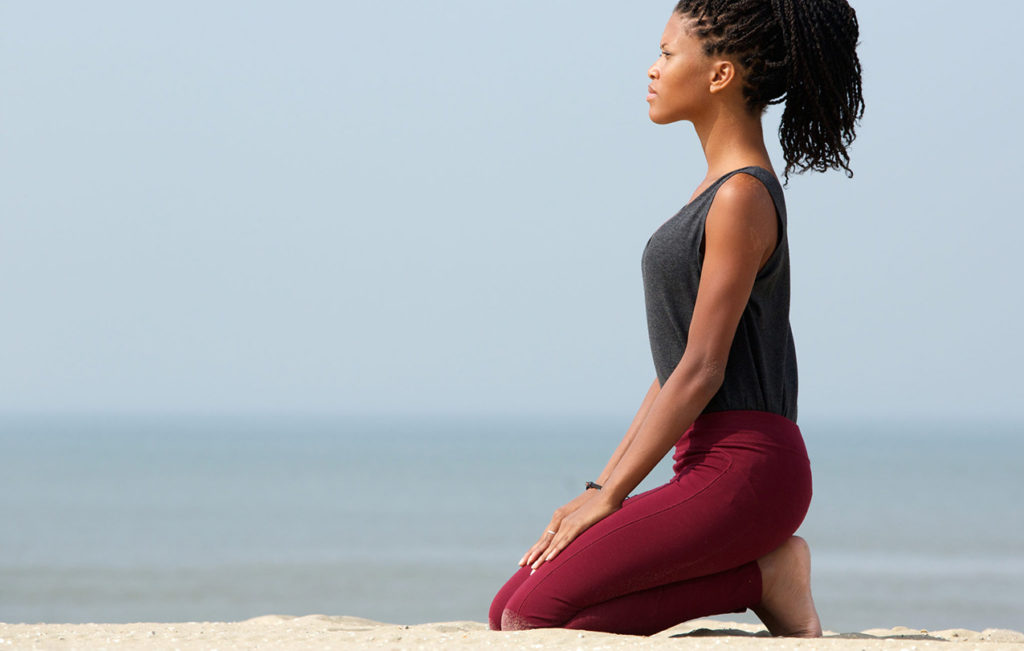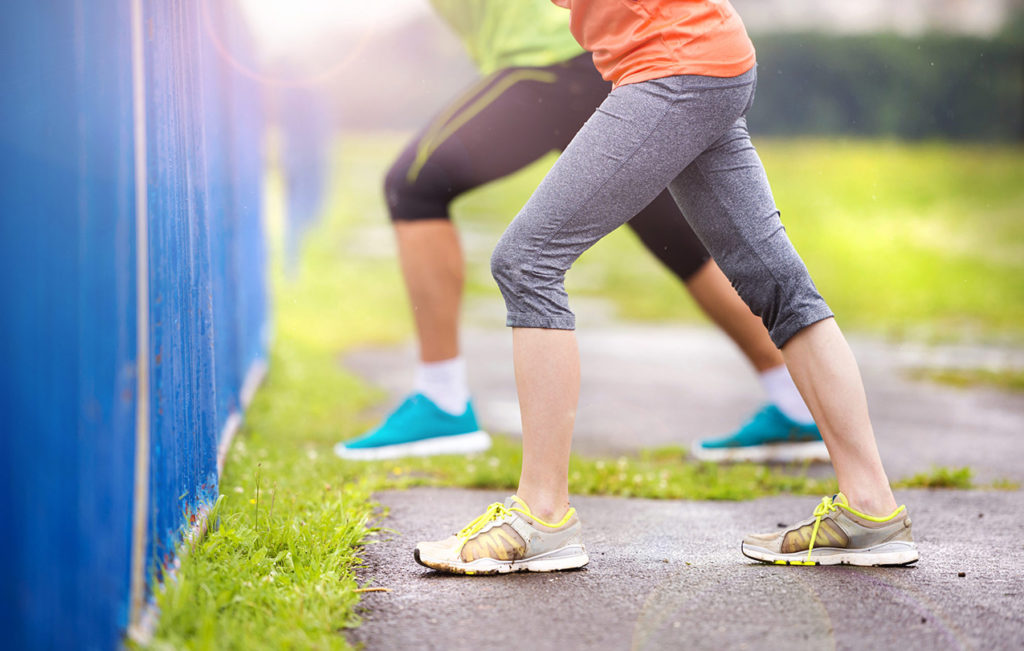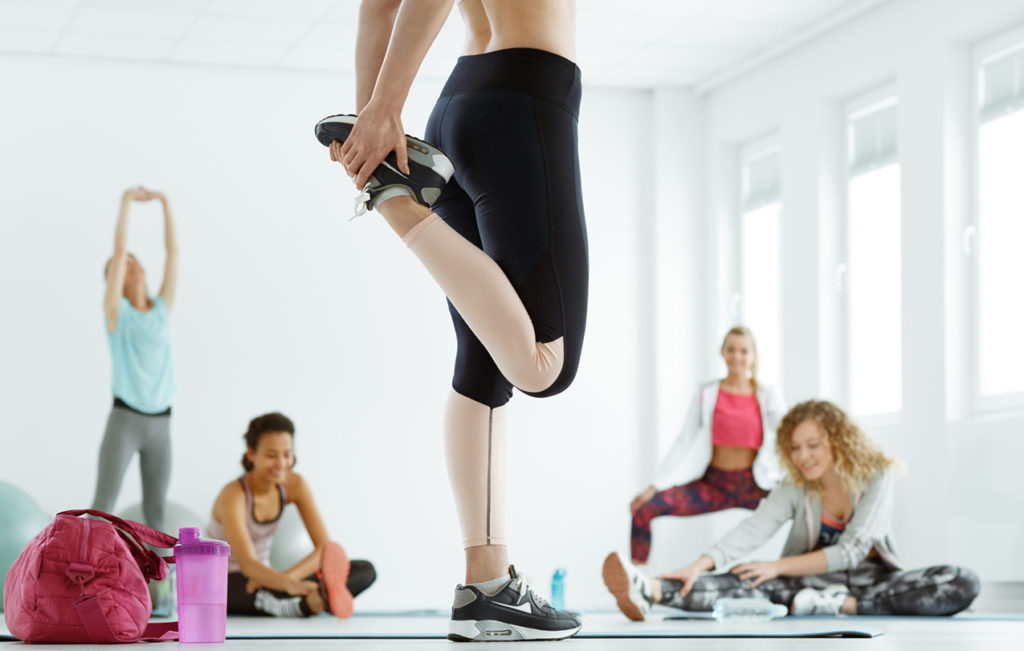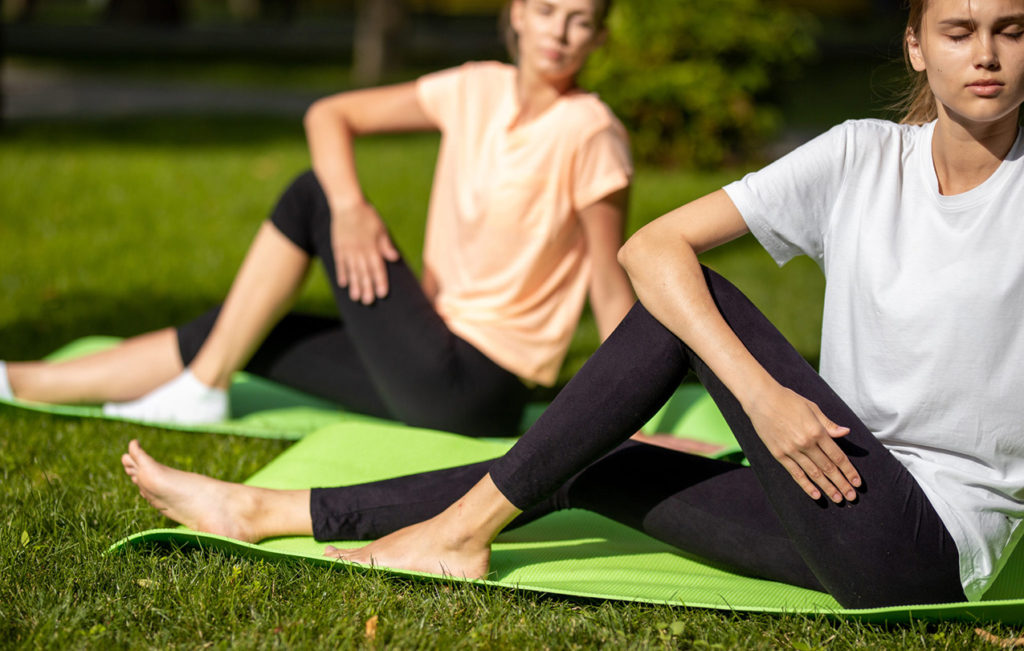Have you ever experienced pain in your ankle or foot with running? That pain may be caused by an injury. There are two main causes of injuries that runners should be aware of:
- Overuse Injuries
- Traumatic injuries
What is an overuse injury?
An overuse injury happens when repetitive activity stresses tissues such as muscles, tendons or bones, to the point where they break down and become inflamed. Examples of overuse running injuries are:
- Plantar fasciitis
- Plantar fasciitis occurs when you irritate the band of tissue on the bottom of your foot that connects your heel bone to the ball of your foot.
- Heel spur
- A Heel spur is a result of chronic plantar fasciitis.
- Achilles tendonitis
- Achilles tendonitis occurs when you irritate the band of tissue or tendon connecting your calf muscles in your lower leg to the back of your heel bone.
- Tibialis posterior tendonitis
- Tibialis posterior tendonitis is inflammation and irritation of the tendon that travels from inside of your ankle bone down the arch of the foot.
- IT band friction syndrome
- IT band friction syndrome is a result of the IT band (the thick tissue running from the outside of the hip down to just below the outside of the knee) rubbing against the outer bone of the knee, causing friction and inflammation.
- Patellofemoral syndrome
- Patellofemoral syndrome is a complicated word for pain originating from behind the knee cap. The backside of the knee cap excessively rubs against the end of the thigh bone resulting in pain and inflammation.
What is a traumatic injury?
A traumatic injury is a more sudden and often violent form of injury, resulting in tissues being rapidly over-stretched or damaged. Some examples of traumatic injuries include sprains (torn ligaments), strains (torn muscles), lacerations or even broken bones.
How can I prevent a foot or ankle injury when running?
There are many things you can do to prevent a foot or ankle injury. Use the following tips to help decrease your risk of injury:
- Listen To Your Body (Slowly Progress Your Running Distance)
- Use The Proper Running Technique
- Wear The Proper Footwear
- Don’t Forget To Stretch
- Strength Training
- Regular Physiotherapy Treatments (if you have pain)
Listen to your body (slowly progress your running technique)
One of the most important tips for any athlete, not just runners, is to listen to your body. Don’t over exert yourself. It’s common for people to run too much, too soon, so that their bodies can’t adapt to the stresses of running and their tissues break down and become inflamed. We recommend runners, especially new runners, start slow and pace themselves. Overtime, as your body’s tissues evolve to withstand the stresses of running, you’ll be able to increase your pace without injuring the muscles, tendons or ligaments in your feet or ankles (and other areas of your body).
We recommend starting with a walk and run program where you walk for 30 seconds then run for 30 seconds and repeat this five times. Gradually work your way up to 15 repetitions. Then you can begin to increase your run time and decrease your walk time. We recommend a 15-second walk and 45-second run, starting with low repetitions (around 7 or 8). From there, you can work your way up to 15 repetitions. Continue this practice until you find the right walk to run ratio that works for you.
Another tool to help you is The Running Clinic’s training program for running your first 5K.
Use the proper running technique
There’s no one right way to run as everyone is built differently, but our best advice is not to let your heel be the first part of your foot to hit the ground. You should run more flat-footed or even land towards the ball of your foot (not on the ball). This reduces the amount of force transmitted into your foot up through the ankles, knees, hips, and back. Your foot will make contact with the ground under your centre of gravity, making it easier to propel yourself forward with each step.
A word of warning. Running using this technique too excessively and too soon could also result in injury. You’ll need to listen to your body and start slow.
If you’re an avid runner and don’t want to start with a walk-run program, you can instead, start by only running with this technique for the last few minutes of your run and increase it by a minute or two at the end of each run.
To run using this technique, a person needs to run at about a 180 strides/min, which is a much higher stride frequency than what most people run at (~165 strides/min). You will need to keep your running speed the same and only increase the number of strides per minute. This forces you to take smaller steps, helping to avoid your heel being the first point of contact with the ground. We recommend counting for a 10 second period where you would take 30 steps. This is the equivalent of 180 steps in 60 seconds. This way of running can be called the minimalist approach, as the running shoe required for most people is a basic, flat racing shoe (one without posts, lifts, or arch supports).
Some other running techniques to help you avoid injury are:
- Don’t let your knees collapse inward as you step down.
- Maintain good posture as you run.
- Swing your arms — but not so much that each hand is crossing the midline of the body.
- Reduce excessive body rotation and lateral swaying (when your body sways back and forth) and vertical displacement (how much your body moves up and down).
- Keep your head facing forward.
- Make sure your back, shoulders, and arms stay relaxed.
Wear the proper footwear
There is no universal type of footwear that will work for every runner, but we do recommend wearing a flatter shoe with little to no heel that promotes the running technique (minimalist approach) we discussed above. A flatter running shoe makes the foot, ankle, knee, hip, and spine work in the way they were designed. Our bodies are meant to run and handle the stress and strain of running as long as it’s not excessive and beyond what our tissues are used to. Our muscles, ligaments, tendons, bones, joints, and connective tissue actually become stronger as a result of the usual stresses of running.
Running shoes with extra cushioning, a larger heel, or both, make it more difficult to land towards the ball of your foot and promote incorrect biomechanics of the foot, ankle, and knee which can lead to injury. To explain this better, try running in high heels, but don’t let your heel be the first point of contact! Hard isn’t it? This is what happens when you run in shoes with a large heel or cushioning. However, some people have significant issues regarding their feet requiring them to wear shoes with arch support or shoes that are supportive in other ways. Remember to do what is right for your body — contact us if you’re unsure about the type of support your feet need for running.
If you are used to wearing highly cushioned shoes or shoes that control your arch and want to change your runners to a minimalist shoe, you need to slowly work your way into it or you’ll likely run into other injuries. You would slowly start wearing these flatter shoes using the same program that was mentioned in the proper running technique section.
Don’t forget to stretch
Stretching is an important step in keeping your muscles both strong and flexible. By increasing your flexibility you improve your range of motion. When you don’t stretch, your muscles become tight, your range of motion decreases, and your risk of injury increases. All stretches should be held for 30 seconds, repeated 3 times, twice a day. If you’re unsure what areas your stretching should focus on, book an appointment and we’ll help you build a customized exercise program.
5 popular stretches for runners
Plantar Fascia Stretch
The plantar fascia stretch is used to reduce the tension of the tissues in the bottom of the foot. We recommend two different stretches to help improve the flexibility of the plantar fascia.
- Exercise One: Point your toes up and down, in and out, and in circles (both clockwise and counterclockwise). We recommend repeating these movements 10 times every 2 hours for best results. The best time to do this is before getting out of bed or after prolonged sitting.
- Exercise Two: Sit on the floor with both your knees and the tips of your toes on the ground. If you’re able to, then sit back on your toes so that the arch of your foot feels a stretch. We recommend holding this stretch for 30 seconds and repeating it 3 times.

Gastrocnemius & Soleus Stretches
We recommend repeating these stretches on one or both legs holding it for 30 seconds, repeated 3 times, twice a day for best results.
Gastrocnemius Stretch
- Stand facing a wall and place one foot a full step back and then bend your forward leg. Similar to a slight lunge leaning into the wall.
- Keep your back heel on the ground and your foot perpendicular to the wall.
- Lean into the wall until you feel the stretch in your calf with the leg that’s back.
Another way of doing the gastrocnemius stretch is by standing on a step with your heels hanging off the edge of the step, keeping your legs straight.

Soleus Stretch
This stretch is similar to the gastrocnemius stretch, but with this one, both knees are bent. We recommend holding this stretch for 30 seconds, repeating 3 times, twice a day for best results.
- Stand facing a wall with one foot back and the other foot forward with both knees bent.
- Keep your back heel on the floor, and perpendicular to the wall.
- Lean into the walk until you feel the stretch in your calf in your back leg.
Another way of doing the soleus stretch is by standing on a step with your heels hanging off the edge of the step, keeping your legs slightly bent.
Quadriceps Stretches
Quad stretches help to increase the flexibility of the hip and knee joint and encourage proper knee alignment.
- Stand on one leg.
- Bend your other knee and grab onto your ankle behind you. Pull your heel to your buttocks on the same side.
- For example, if you were lifting your left leg first you would bend your left knee and pull your left heel to your left buttock
s.
- For example, if you were lifting your left leg first you would bend your left knee and pull your left heel to your left buttock
- Push your pelvis slightly forward, stand tall keeping your knees close together.

Hamstring Stretches
Hamstring stretches are good to help avoid overuse injuries directly targeting the knees, pelvis and lower back.
- Find two chairs or a chair and a stool. Use anything where you can sit on one with your leg raised on the other.
- Sit on the chair and with a straight leg, place it with your heel on a stool (or another chair).
- Lean slightly forward bringing the centre of your chest to your knee cap. Make sure to keep your back straight.
Repeat this stretch on both legs holding it for 30 seconds, repeated 3 times, twice a day for best results.
Gluteus Maximus Stretches (Glutes)
Glute stretches help increase the flexibility of your hips and lower back.
- Sit on the floor with one leg straight out in front of you with the other knee bent.
- Take your leg with the bent knee and place it across your other leg (as if you were crossing your legs).
- Take the opposite arm of your bent leg and cross that elbow over your bent knee.
- Slowly turn your body in the direction of your arm. If you’re left arm crossed over to the right knee, you would turn your body to the right and vice versa.

Repeat this stretch on both legs holding it for 30 seconds, repeated 3 times, twice a day for best results.
Strength training
Building proper ankle, leg, and core muscle strength helps prevent injuries by reducing the amount of stress placed on your joints when running and increases the tensile strength of your muscles, tendons, ligaments and bones to withstand the stresses of running.
We recommend the following strength training exercises for runners:
Resisted Ankle Inversion & Eversion
Resisted ankle inversion and eversion exercises help to strengthen the muscles on both sides of your ankle. We recommend sitting on the floor with your leg straight out in front of you and using a band attached to a sofa leg or attached to a closed door (around 4 inches from the floor).
- Wrap the other side of the exercise band around the ball of the foot of the ankle you want to work on.
- Move your foot in an inward direction (inversion) or in an outward direction (eversion) against the resistance of the exercise band.
- Attach the band from the left side of the ankle (or just turn yourself around and face the opposite direction) and perform the exercise with the band attached from the right side of the ankle.
We recommend repeating this exercise at least 10 times on each foot and perform 3 sets, once or twice a day.
Calf Raises
This strength training exercise helps you build muscle in the back of your lower leg. It looks similar to our standing gastrocnemius and soleus stretches, but is a little bit different.
- Stand so that the heels of your feet are hanging off the edge of a step or stool.
- Rise up so you are standing on the tips of your toes and then lower yourself down so that your heels are hanging below the edge of the step.
We recommend repeating this exercise at least 10 times on each foot and perform 3 sets, once or twice a day. You can hold onto a chair for balance and even add weight if you’re comfortable doing so.
Intrinsic Foot Exercises
Intrinsic foot muscles are the muscles on the bottom of your foot and are important for the overall health and strength of your feet.
- Sit on the floor with your feet flat on the ground shoulder-width apart.
- Lift your toes (and only your toes) up off the ground.
- This lifts your foot arch off the ground and you will be able to feel the tension in your arch.
- Now relax your toes, but keep the arch lifted and tense.
- Avoid tensing muscles in your toes or calves.
We recommend holding each repetition for at least 30 seconds and repeat 3 to 5 times for each foot.
Core Exercises
There are many different core strengthening exercises you can do. For example, planking, crunches, bird dogs, russian twists, monster squat lateral walking, and more. Strengthening your core improves your overall balance, stability, and ability to perform everyday activities and lowers the risk of injury.
If you’re a more advanced trainer, we recommend this list for a variety of different core strengthening exercises. Don’t force these core strengthening exercises. If not done correctly you may experience lower back pain or injury. Contact us today and our physiotherapists will help you reduce the risk of injury by properly showing you how to perform core strength exercises.
Hip Abduction
Hip abductors are considered to be a part of the gluteal muscles and are often forgotten muscles that when strengthened, tighten our core muscles preventing pain in our back, pelvis, hips and knees. These muscles stabilize your pelvis and in turn keep your ankles, knees, hips, pelvis and back aligned while running.
Hip abduction is the movement of your leg away from the midline of your body. A few simple hip abduction exercises are:
- Lying side leg lifts (Jane Fonda’s)
- Monster squat lateral walking
- Banded squats.
Gluteus Maximus Strengthening Exercises
The glute max muscles, like your hip abductors, can be easily forgotten about. Your glutes stabilize your pelvis and lower back while running. It’s important to find exercises that favour your glutes!
We recommend this list for a variety of different exercises that give your glutes the most attention! However, be careful, if these exercises are done incorrectly it may cause more pain. Contact our physiotherapists for help to perform all glute strengthening exercises without injury.
Regular physiotherapy treatments (if you have pain)
If you’re experiencing pain or stiffness, regular physiotherapy treatments can help you maintain an active, healthy lifestyle by reducing pain and helping your body become stronger and more resilient to injury. You can also try acupuncture, intramuscular stimulation (IMS), or radial shockwave therapy treatments more specific foot or ankle injuries. For more serious and ongoing foot or ankle problems, our custom orthotics (made by taking 3-dimensional molds) can be the remedy you’ve been looking for. Our registered physiotherapists and massage therapists at Summit Physiotherapy in St. Albert will be happy to treat your pain.
Think you may have a foot or ankle injury?
Come into Summit for your consultation today: no referral needed.
